drewzee87t
Member
- 70
- 8
- 8
- Location
- MO ozarks
I have been through a couple different ringers on trying to get a tach on my 1028. I finally got the recipe correct today.
after a couple of interesting attempts, I did get a VDO 333-156 (which I believe someone here has previously recommended). It's a 52mm 4k alternator signal gauge.
I have included some pics, it works great and the install was pretty clean. I bench installed it in the engine bay and set it up and calibrated it, then installed it to the bezel and wired it inside.
Once I had it bench calibrated, I used a 2" hole saw to cut out the hole, then widened it to fit with a half round. I switched the volt meter to the new hole as I like the visibility on the tach to where the volt gauge was.
The tacho pulse from the alt runs to the STE system, I was able to find it under the dash and the wire to tap is in the photos below. Otherwise, I just tapped the light bulb and ground from the volt meter and for the main gauge power I tapped into the fuse at the horn and put in a inline fuse. Everything worked perfect. I hope this helps some people, its a great gauge and looks good, very easy. I have a good source for these at way less than Jegs or Summit, pm me for info. I am not in any way associated with this business, but the gauge was less than $100 shipped.
Questions or critical comments welcome.
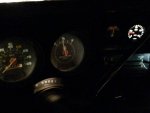
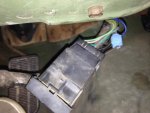
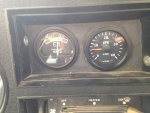
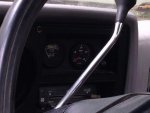
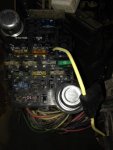
Thanks
after a couple of interesting attempts, I did get a VDO 333-156 (which I believe someone here has previously recommended). It's a 52mm 4k alternator signal gauge.
I have included some pics, it works great and the install was pretty clean. I bench installed it in the engine bay and set it up and calibrated it, then installed it to the bezel and wired it inside.
Once I had it bench calibrated, I used a 2" hole saw to cut out the hole, then widened it to fit with a half round. I switched the volt meter to the new hole as I like the visibility on the tach to where the volt gauge was.
The tacho pulse from the alt runs to the STE system, I was able to find it under the dash and the wire to tap is in the photos below. Otherwise, I just tapped the light bulb and ground from the volt meter and for the main gauge power I tapped into the fuse at the horn and put in a inline fuse. Everything worked perfect. I hope this helps some people, its a great gauge and looks good, very easy. I have a good source for these at way less than Jegs or Summit, pm me for info. I am not in any way associated with this business, but the gauge was less than $100 shipped.
Questions or critical comments welcome.





Thanks




